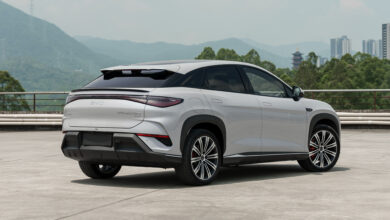Researchers Claim Batteries With Iron Cathodes Outperform Traditional Materials

[ad_1]
Sign up for daily news updates from CleanTechnica on email. Or follow us on Google News!
It is part of our mantra at CleanTechnica that the batteries needed to make the EV revolution a full success have not yet been invented. A year ago, there were horror stories flying around the interwebs that electric cars were no good in winter. Within a month, CATL and other battery manufacturers said they had new batteries in the works that would solve or at least reduce the loss of performance of batteries in cold weather. People (usually those who have never driven an electric car) complain loudly that the today’s batteries take too long to charge. Presto, cars like the Kia EV3 are announced that can charge from 10 to 80 percent in 30 minutes. Oh, dear. What will we find to complain about next?
How about the high cost of batteries? That’s one that won’t be so easy to solve, even though several researchers are exploring new technology that replaces lithium with sodium. The price of lithium has dropped dramatically from a year ago, but there are few materials on Earth that are cheaper than sodium — one the the components of ordinary salt. Sodium is abundant virtually everywhere — in seawater, for example.
Batteries & Cathodes
Cathodes represent about half the cost of conventional lithium-ion batteries. Many of those cathodes contain cobalt and nickel, both of which are relatively expensive and raise environmental concerns. They are also widely used in various industries. Nickel is used to make stainless steel, and cobalt for decades has been used by the oil industry to make gasoline. Of course, the oil companies don’t mention that when they slam the manufacturers of batteries for forcing little children to dig cobalt out of the ground with their fingers. Hypocrisy is such a normal part of their business that they don’t even blush when caught talking out of both sides of their mouths.
Another cheap and abundant raw material is iron. Researchers at Oregon State University, in collaboration with colleagues at Vanderbilt University, Stanford University, the University of Maryland, Lawrence Berkeley National Laboratory, and the SLAC National Accelerator Laboratory, announced this week that they have found a way to substitute iron for nickel and cobalt in the cathodes of lithium-ion batteries, which could dramatically reduce the cost of cathodes.
The findings, published May 23, 2024 in the journal Science Advances, are important for multiple reasons. Xiulei “David” Ji, the lead researcher at Oregon States, says, “We’ve transformed the reactivity of iron metal, the cheapest metal commodity. Our electrode can offer a higher energy density than the state of the art cathode materials in electric vehicles. And since we use iron, whose cost can be less than a dollar per kilogram — a small fraction of nickel and cobalt, which are indispensable in current high energy lithium ion batteries — the cost of our batteries is potentially much lower.” Economics aside, iron-based cathodes would allow for greater safety and sustainability, Ji added.
Replacing Cobalt & Nickel In Batteries
As more and more lithium-ion batteries are manufactured to electrify the transportation sector, global demand for nickel and cobalt has soared. Ji points out that in a couple of decades, shortages in nickel and cobalt could put the brakes on battery production as it is currently done. In addition, the energy density of cobalt and nickel is already being extended to a maximum level. If it is pushed further, oxygen released during charging could cause batteries to ignite.
Cobalt is toxic, which means it can contaminate ecosystems and water sources if it leaches out of landfills. [Note: no one is disposing of electric car batteries in landfills today. The materials inside are too valuable and can be reclaimed to make new batteries. But batteries for electric bikes, cell phones, computers, and so forth can easily end up in landfills, so the researchers are partially correct.]
A battery consists of two electrodes — the anode and cathode, typically made of different materials — as well as a separator and electrolyte, a chemical medium that allows for the flow of electrical charge. During battery discharge, electrons flow from the anode into an external circuit and then collect at the cathode. In a lithium-ion battery, a charge is carried via lithium ions as they move through the electrolyte from the anode to the cathode during discharge, and back again during recharging.
“Our iron-based cathode will not be limited by a shortage of resources,” said Ji, who explained that iron, in addition to being the most common element on Earth as measured by mass, is the fourth most abundant element in the Earth’s crust. “We will not run out of iron till the sun turns into a red giant.”
Ji and collaborators from multiple universities and national laboratories increased the reactivity of iron in their cathode by designing a chemical environment based on a blend of fluorine and phosphate anions — ions that are negatively charged. The blend is a fine mixture of iron powder, lithium fluoride, and lithium phosphate.
“We’ve demonstrated that the materials designed with anions can break the ceiling of energy density for batteries that are more sustainable and cost less,” Ji said. “We’re not using some more expensive salt in conjunction with iron, just those the battery industry has been using and then (adding) iron powder. To put this new cathode in applications, one needs to change nothing else — no new anodes, no new production lines, no new design of the battery. We are just replacing one thing — the cathode.”
Storage efficiency still needs to be improved, Ji said. Right now, not all of the electricity put into the battery during charging is available for use upon discharge. When those improvements are made, and Ji expects they will be, the result will be a battery that works much better than ones currently in use while costing less and being more environmentally friendly.
Chip in a few dollars a month to help support independent cleantech coverage that helps to accelerate the cleantech revolution!
“If there is investment in this technology, it shouldn’t take long for it to be commercially available,” said Ji. “We need the visionaries of the industry to allocate resources to this emerging field. The world can have a cathode industry based on a metal that’s almost free compared to cobalt and nickel. And while you have to work really hard to recycle cobalt and nickel, you don’t even have to recycle iron. It just turns into rust if you let it go.”
The Basic Energy Sciences program of the U.S. Department of Energy funded this research, which was co-led by Tongchao Liu of Argonne National Laboratory and also included Oregon State’s Mingliang Yu, Min Soo Jung, and Sean Sandstrom. Scientists from Vanderbilt University, Stanford University, the University of Maryland, Lawrence Berkeley National Laboratory, and the SLAC National Accelerator Laboratory contributed as well.
The Takeaway
Many readers will have questions about this research. We do not have details on energy density, charging rate, low and high temperature performance, battery life, and so forth. Although, some clues may be contained in the published research paper. It is good news that the iron cathodes process does not require any changes to the production lines that manufacture batteries, but automakers will need years of testing in real-world situations before they agree to purchase these batteries for use in the cars and trucks they sell. That is a given and there’s really no way to speed up that process.
That being said, the improvements in batteries for electric vehicles are happening quickly — much more quickly than improvements to conventional cars came about. It took decades for the self starter to replace the hand crank, and for automatic transmissions, power steering, air conditioning, disc brakes, and self-cancelling turn signals to become widely available. The chances are excellent that the electric cars available in 2030 will represent a quantum leap forward from the EVs of today. Here at CleanTechnica, we can’t wait to see what the EV revolution has in store. The future’s so bright, we gotta wear shades!
Have a tip for CleanTechnica? Want to advertise? Want to suggest a guest for our CleanTech Talk podcast? Contact us here.
Latest CleanTechnica.TV Videos

CleanTechnica uses affiliate links. See our policy here.
[ad_2]






